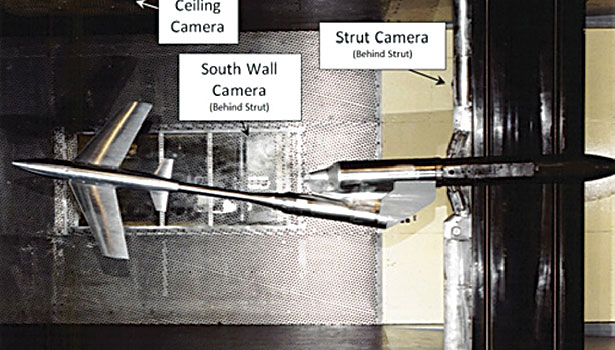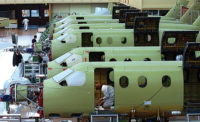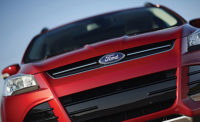Great advances have been made in computational fluid dynamics and flight-simulation programs. Yet, when it comes to aircraft and missile designs, no amount of modeling can replace real-world testing using wind tunnels.
The tunnels enable aerospace manufacturers to conduct a wide range of tests, including stability and control, jet effects and captive trajectory. More importantly, the tunnels eliminate the need for full-size prototypes, which take years to develop and build, and cost millions of dollars.
Many of the leading companies have their scale-model aircraft tested at Calspan Corp.'s transonic wind tunnel, located in Buffalo, NY. The largest, independently owned wind tunnel in the United States, Calspan has performed 140,000 hours of aerodynamic testing on more than 1,000 different air vehicle, aircraft subsystem, missile and space launch configurations.
The aircraft (and subsystems) are tested at wind speeds of up to Mach 1.3 in a closed-circuit system. Engineers there use specialized video recording and photography equipment to acquire images and determine the effectiveness of an aircraft's design.
Three video cameras are used for standing air-flow testing. Another is required for the schlieren test, which captures the flow away from an object's surface. A fifth video camera, along with a still-image-camera, are required for oil-flow visualization.
For several years, Calspan engineers used five standard-definition video cameras and a Hasselblad still film-based camera under fluorescent lighting. Engineers streamed video through a frame rate and signal converter, and used a matrix switcher for display and recording. Wind-tunnel data was overlaid and recorded by a PC with a video capture card.
The video cameras had a resolution of 720 pixels and ran 60 fps, but were unable to capture low-light images during schlieren and oil-flow tests. A second problem was they displayed lighted metal surfaces as hot spots in both video and still images.
To eliminate both problems, Calspan engineers decided to replace all six cameras with five that produce higher-contrast video and still images at higher frame rates. They knew the wind tunnel's closed-circuit configuration required low-noise, low-lighting cameras, so they focused on CCD-sensor cameras rather than CMOS-sensor models.
The other important factor was cable length, as the cameras require very long cables to connect them to the control room. Calspan engineers looked into GigE cameras because they accept power cables up to 100 meters without the need for repeaters.
Eventually, the company installed five Zebra2 GigE cameras made by Point Grey Research Inc. The engineers really like the camera's FlyCapture2 software, which lets them easily adjust the lighting and cameras to remove much of the glare from the metal models being tested. They also like the camera's 5-megapixel images and frame rate of 25 fps. Images are sent over a HD-SDI connection to reduce image flicker and eye strain.
Calspan still records video at 720-pixel resolution due to display, overlay and other hardware limitations. But the company plans to eventually record video at 1,080 pixels, which is the Zebra2's optimum resolution. It also plans to complement the cameras with LED lighting.
For more information on GigE cameras, call 866-765-0827 or visit http://ww2.ptgrey.com.







